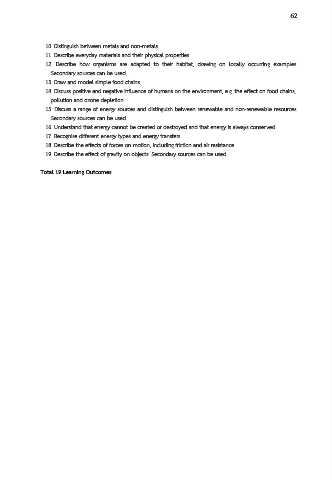Page 64 - เล่ม 65 ม.ต้น หลักสูตรสถานศึกษาโรงเรียนมงฟอร์ต
P. 64
62
10. Distinguish between metals and non-metals.
11. Describe everyday materials and their physical properties.
12. Describe how organisms are adapted to their habitat, drawing on locally occurring examples.
Secondary sources can be used.
13. Draw and model simple food chains.
14. Discuss positive and negative influence of humans on the environment, e.g. the effect on food chains,
pollution and ozone depletion.
15. Discuss a range of energy sources and distinguish between renewable and non-renewable resources.
Secondary sources can be used.
16. Understand that energy cannot be created or destroyed and that energy is always conserved.
17. Recognise different energy types and energy transfers.
18. Describe the effects of forces on motion, including friction and air resistance.
19. Describe the effect of gravity on objects. Secondary sources can be used.
Total 19 Learning Outcomes

